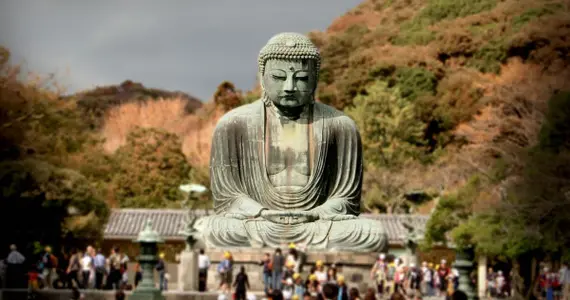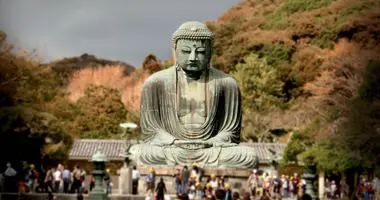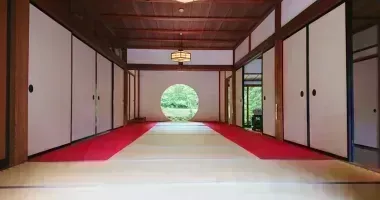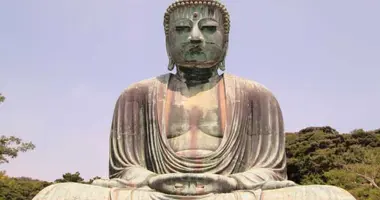Kamakura Temples & Shrines: A Journey Through Time and Spirituality
- Published on : 16/06/2024
- by : Japan Experience
- Youtube
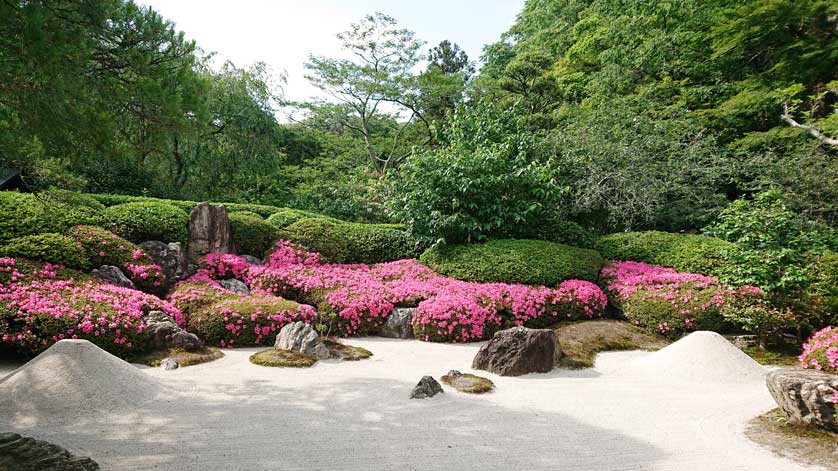
Meigetsu-in Temple
Nestled just an hour south of Tokyo, Kamakura stands as a testament to Japan's rich spiritual and historical heritage. This ancient city, once the political center of medieval Japan, is now home to an impressive collection of temples and shrines that offer visitors a profound journey through time and spirituality. From the iconic Great Buddha statue to the serene bamboo groves, Kamakura's religious sites provide a unique blend of cultural, architectural, and spiritual experiences. Whether you're a history enthusiast, a spiritual seeker, or simply a curious traveler, Kamakura's temples and shrines offer something truly remarkable for everyone.
The historical significance of Kamakura's religious sites
Kamakura's religious landscape is deeply intertwined with its historical importance. During the Kamakura Period (1185-1333), the city served as the seat of the first shogunate government, marking a significant shift in Japan's political and cultural dynamics. This era saw the rise of the samurai class and the spread of Zen Buddhism, both of which profoundly influenced the development of Kamakura's religious sites.
The temples and shrines of Kamakura reflect this rich history. Many were founded by prominent samurai families or influential Buddhist monks, serving not only as places of worship but also as centers of power and learning. The architectural styles and artistic treasures found in these sites offer valuable insights into the aesthetic and spiritual values of medieval Japan.
For instance, Tsurugaoka Hachimangu Shrine, dedicated to the patron god of the Minamoto clan, stands as a symbol of the samurai's influence on religious practices. Similarly, Zen temples like Engakuji Temple showcase the close relationship between Zen philosophy and samurai culture, with their austere designs reflecting the disciplined mindset of the warrior class.
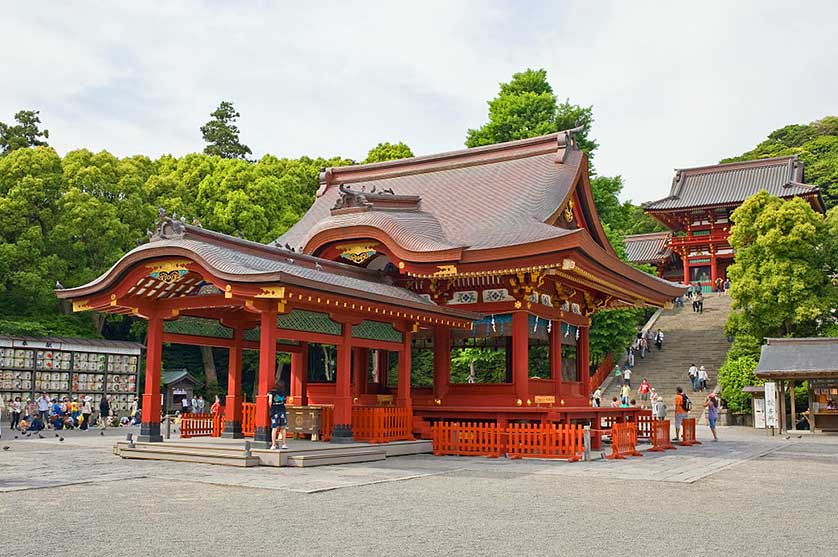
Kaguraden, Tsurugaoka Hachimangu, Kamakura, Kanagawa Prefecture
Top temples to visit in Kamakura
Kamakura boasts an impressive array of temples, each with its own unique character and historical significance. Here are some of the must-visit temples:
Engakuji Temple: Founded in 1282, this Zen temple is one of the five great Zen temples of Kamakura. Its spacious grounds feature several important structures, including the Shariden, which houses a tooth of the Buddha. The temple is particularly beautiful during autumn when the colorful foliage creates a breathtaking backdrop.
Hasedera Temple: Known for its eleven-headed statue of Kannon, the goddess of mercy, Hasedera offers panoramic views of Kamakura and the sea. The temple grounds are home to a captivating hydrangea garden, making it a popular destination during the rainy season.
Kotoku-in Temple: Home to the famous Great Buddha of Kamakura, this temple attracts visitors from all over the world. The bronze statue, standing at nearly 44 feet tall, has withstood earthquakes and tsunamis since the 13th century.
Kosokuji Temple: This lesser-known temple is associated with the 13th-century Buddhist priest Nichiren. Its peaceful atmosphere and beautiful garden make it a perfect spot for quiet contemplation.
Meigetsu-in Temple: Often called the "Hydrangea Temple," Meigetsu-in is famous for its beautiful flowers and unique circular window that frames the garden beyond.
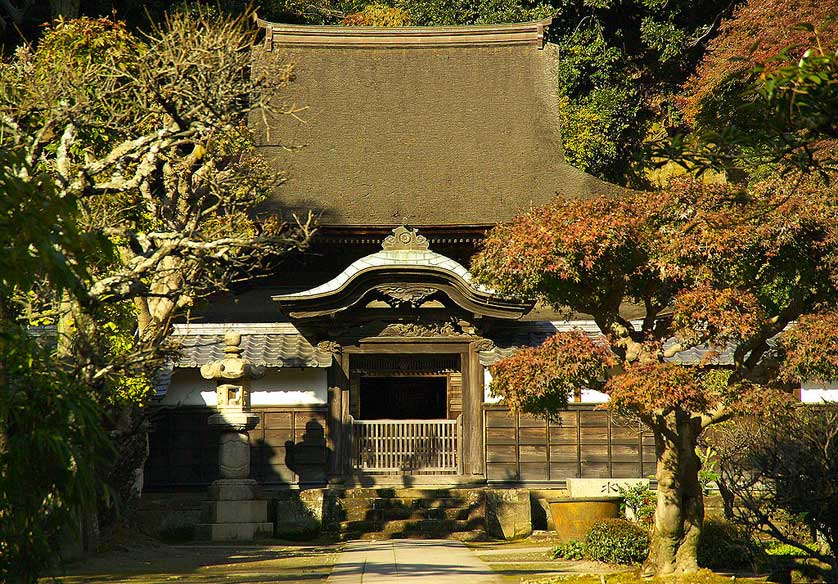
The Shariden, a National Treasure, contains a tooth of the Buddha, Engakuji Temple, Kamakura, Kanagawa Prefecture
Must-see Shinto shrines in Kamakura
While Buddhist temples dominate Kamakura's religious landscape, the city also houses several significant Shinto shrines:
Tsurugaoka Hachimangu Shrine: The most important shrine in Kamakura, Tsurugaoka Hachimangu was founded in 1063 and moved to its current location in 1180 by Minamoto Yoritomo, the first shogun of the Kamakura government. The shrine's impressive approach, lined with cherry trees, is a sight to behold, especially during spring.
Zeniarai Benten Shrine: This unique shrine, dedicated to the god of water, is famous for its ritual of washing money. It's believed that money washed in the shrine's spring will double in value.
Sasuke Inari Shrine: Known for its tunnel of torii gates, reminiscent of Kyoto's famous Fushimi Inari Shrine, this small shrine offers a peaceful retreat from the more crowded attractions.
Unique features and attractions of Kamakura's spiritual places
Kamakura's temples and shrines offer more than just historical and spiritual significance. Many of these sites boast unique features that set them apart:
The Great Buddha (Daibutsu): The colossal bronze statue at Kotoku-in Temple is undoubtedly Kamakura's most famous attraction. Visitors can even enter the statue to observe its hollow interior.
Bamboo Grove at Hokokuji Temple: Often compared to Kyoto's Arashiyama, this serene bamboo forest offers a tranquil setting for meditation and contemplation. Visitors can enjoy matcha tea in the temple's tea house while admiring the bamboo.
Cave of Benzaiten at Zeniarai Benten Shrine: This atmospheric cave shrine adds an element of mystery to the spiritual experience.
Hydrangea Gardens: Several temples, particularly Meigetsu-in and Hasedera, are renowned for their beautiful hydrangea displays during the rainy season.
Zen Gardens: Many of Kamakura's Zen temples feature meticulously maintained rock gardens, offering visitors a chance to experience the essence of Zen aesthetics.

The Kamakura Daibutsu (Great Buddha) at Kotoku-in Temple, Kamakura
Seasonal highlights and best times to visit Kamakura's temples and shrines
Kamakura's temples and shrines offer unique experiences throughout the year, with each season bringing its own charm:
Spring (March to May): This is perhaps the most popular time to visit, with cherry blossoms adorning many temple and shrine grounds. The approach to Tsurugaoka Hachimangu is particularly beautiful during this season.
Summer (June to August): While the weather can be hot and humid, this is the best time to see the hydrangeas in bloom. The Meigetsu-in Temple and Hasedera Temple are especially popular during this period.
Autumn (September to November): The fall foliage creates stunning vistas at many temples, particularly at Engakuji Temple. The weather is also typically mild and pleasant for sightseeing.
Winter (December to February): While colder, winter offers a unique atmosphere with occasional snowfallcreating picturesque scenes. Some temples host special illumination events during this season.
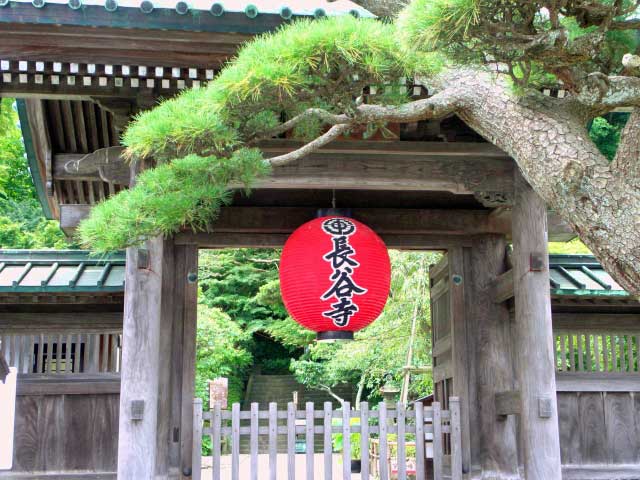
Hasedera Temple, Kamakura
Practical tips for exploring Kamakura's religious sites
To make the most of your visit to Kamakura's temples and shrines, consider the following tips:
Start early: Many sites open around 8:00 or 9:00 AM. Arriving early can help you avoid crowds and enjoy a more peaceful atmosphere.
Use public transportation: Kamakura has an efficient bus and train system. Consider purchasing a Kamakura Free Kankyo Tegata pass for unlimited bus rides.
Wear comfortable shoes: Many temples involve walking on uneven surfaces or climbing stairs. Comfortable, easily removable footwear is essential.
Be respectful: Remember that these are active places of worship. Dress modestly and follow any posted rules.
Try temple cuisine: Some temples offer shojin ryori, traditional Buddhist vegetarian cuisine. It's a unique way to experience Japanese culture.
Consider a guide: While not necessary, a knowledgeable guide can greatly enhance your understanding and appreciation of these sites.
Cultural experiences and activities at Kamakura's temples and shrines
Beyond sightseeing, Kamakura's religious sites offer various cultural experiences:
Zazen Meditation: Some Zen temples, like Engakuji, offer meditation sessions open to the public. It's a chance to experience Zen practice firsthand.
Tea Ceremonies: Several temples host traditional tea ceremonies, allowing visitors to partake in this quintessential Japanese cultural practice.
Calligraphy: Some temples offer the opportunity to try shakyo, the practice of copying Buddhist sutras as a form of meditation.
Festivals: Throughout the year, various festivals and events are held at Kamakura's temples and shrines. The Kamakura Matsuri in April and the Yabusame (horseback archery) demonstrations at Tsurugaoka Hachimangu are particularly noteworthy.
Goshuin: Collecting temple and shrine stamps, or goshuin, in a special book is a popular activity among visitors. Each stamp is unique to the site and serves as a beautiful memento of your journey.
Exploring Kamakura's temples and shrines offers a profound journey through Japan's spiritual and cultural heritage. From the towering Great Buddha to the serene Zen gardens, each site tells a unique story of faith, art, and history. Whether you're drawn by the architecture, the spiritual atmosphere, or the cultural experiences, Kamakura's religious sites provide a rich tapestry of experiences that will leave a lasting impression on any visitor.
